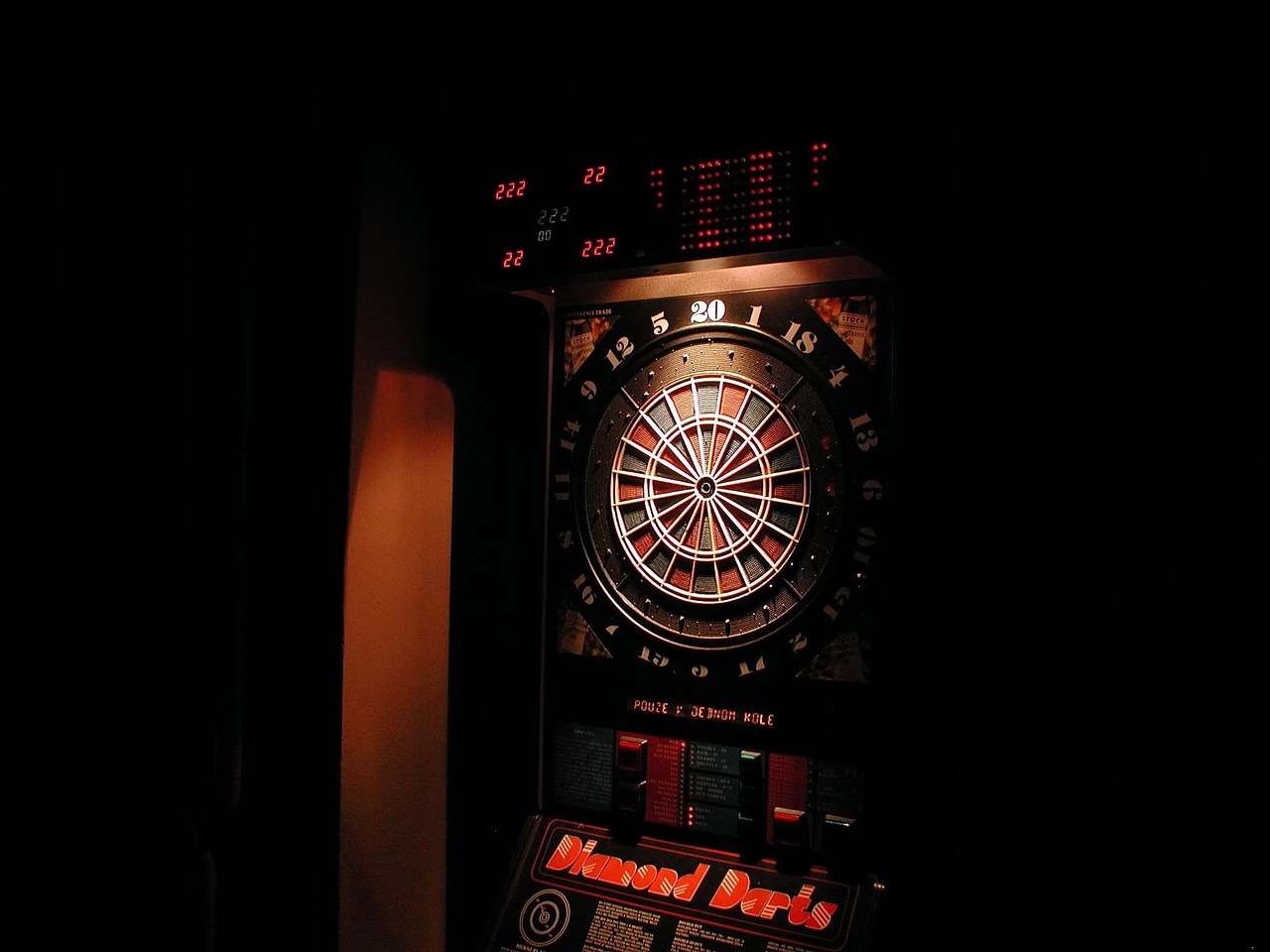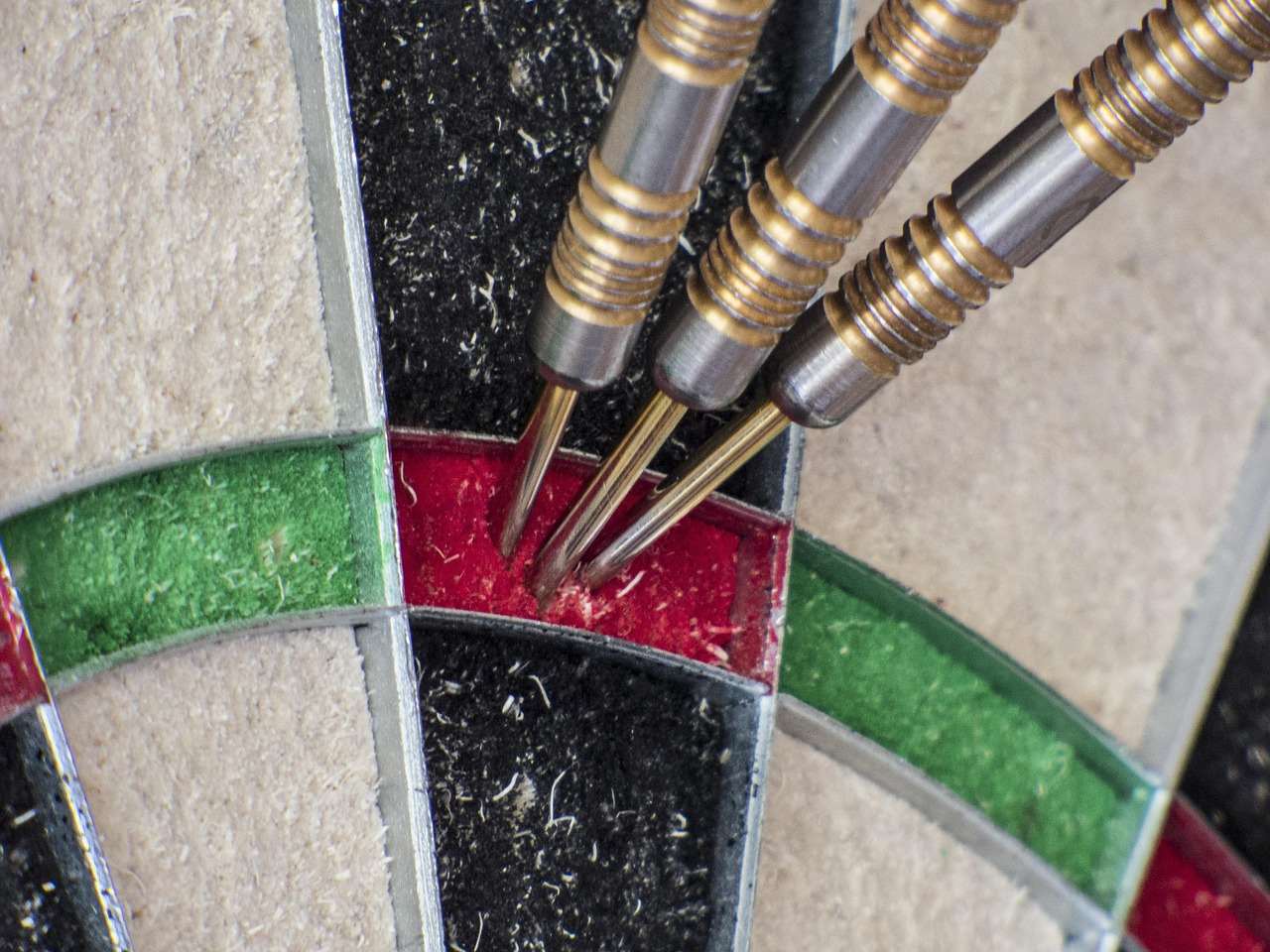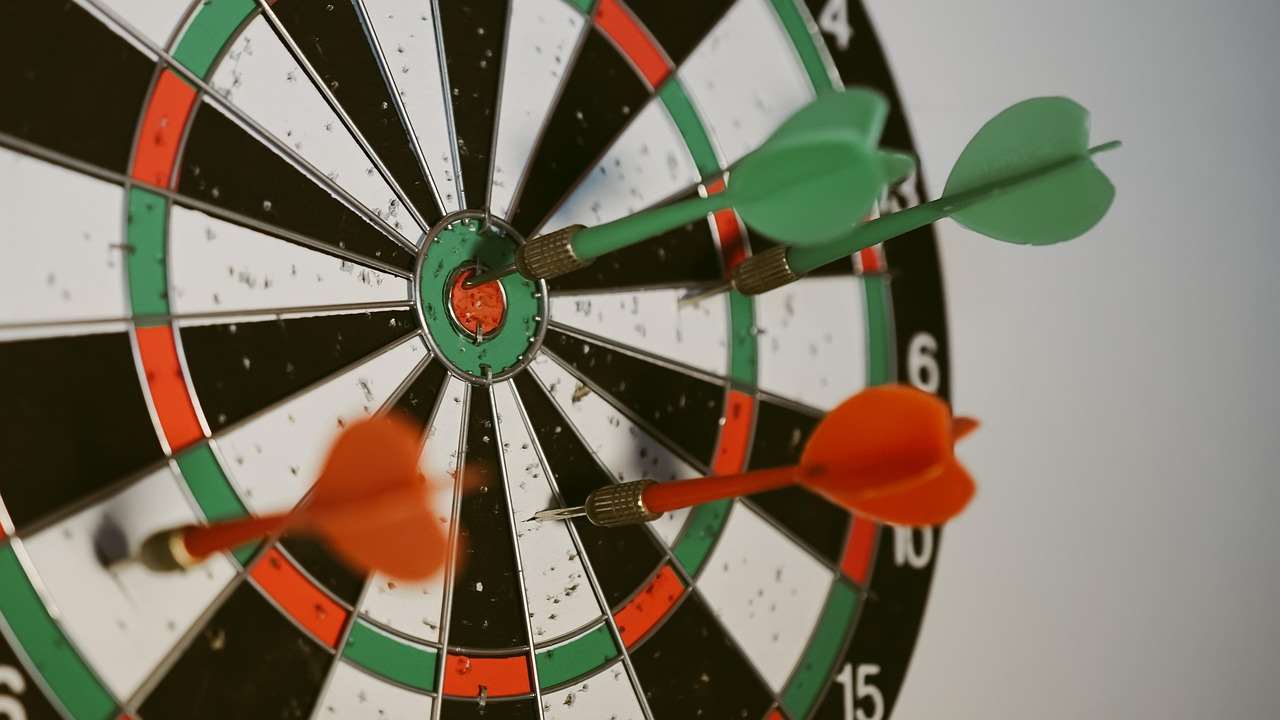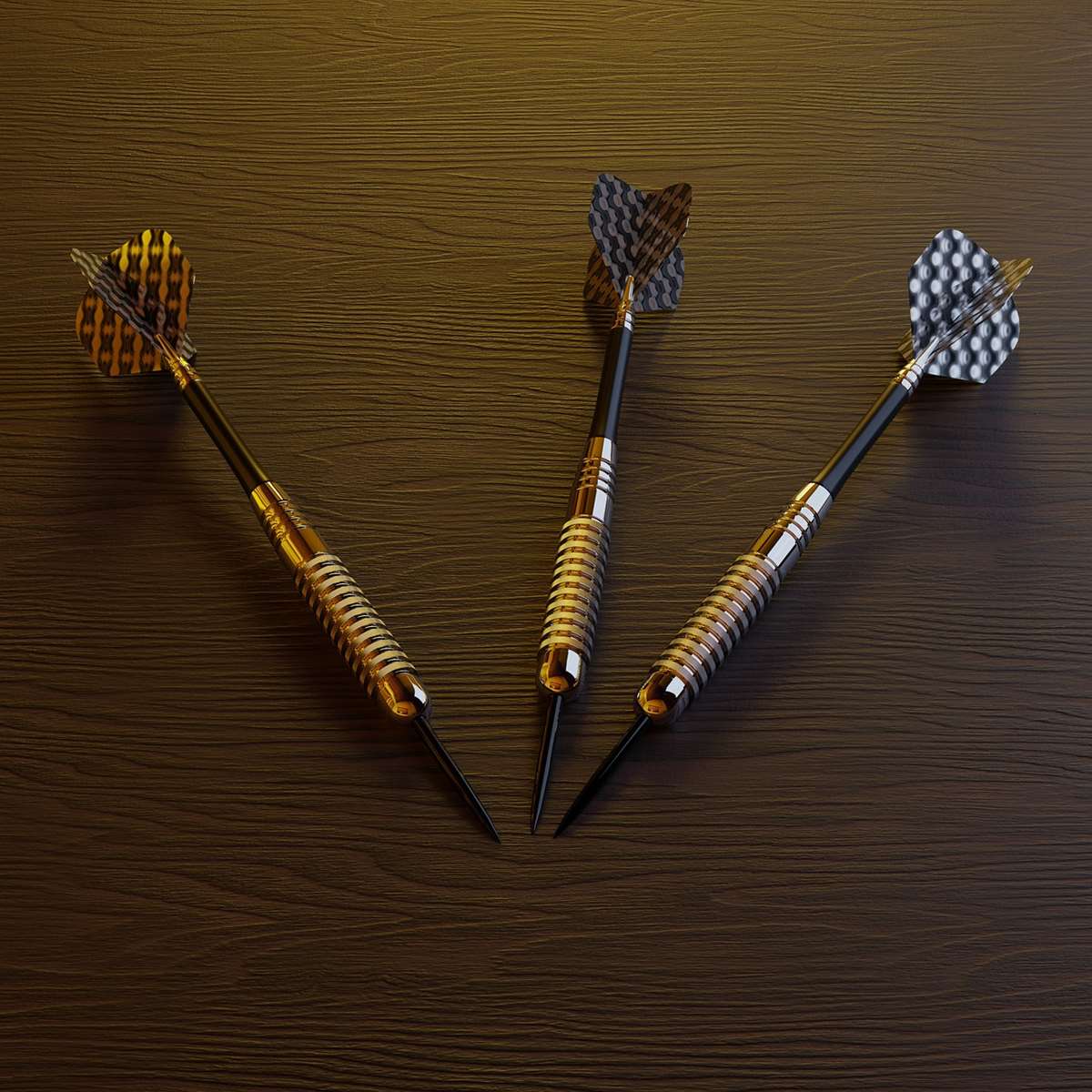Learning how to use dart flight protectors is simple: just slide them onto the back of your dart flights! These inexpensive accessories significantly extend the lifespan of your flights by preventing damage from incoming darts. This guide will walk you through the installation process, discuss different types of protectors, and offer tips for maximizing their effectiveness to improve your darts performance.
⚠️ Still Using Pen & Paper (or a Chalkboard)?! ⚠️
Step into the future! The Dart Counter App handles all the scoring, suggests checkouts, and tracks your stats automatically. It's easier than you think!
Try the Smart Dart Counter App FREE!Ready for an upgrade? Click above!
Why Use Dart Flight Protectors?
Before we dive into how to use dart flight protectors, it’s crucial to understand why they’re so important for any serious darts player. Dart flights are surprisingly delicate. Repeated impacts from other darts, especially during tightly grouped throws, can quickly lead to tears, bends, and ultimately, unusable flights. This not only affects your dart’s trajectory and accuracy but also requires you to constantly replace your flights, which can become costly over time.
Dart flight protectors offer a simple yet effective solution. They act as a shield, absorbing much of the impact and preventing direct damage to the flight material. By using flight protectors, you can significantly prolong the life of your dart flights, saving you money and ensuring consistent performance.
Think of it this way: a car bumper protects your car from minor collisions. Similarly, flight protectors safeguard your flights from the constant barrage of incoming darts. It’s a small investment that yields big returns in terms of flight longevity and overall playing experience.

Different Types of Dart Flight Protectors
Not all dart flight protectors are created equal. While their primary function is the same – to protect your flights – they come in various shapes, sizes, and materials. Understanding the different types will help you choose the best option for your playing style and preferences. Here’s a breakdown of some common types:
- Standard Metal Protectors: These are typically made from aluminum or steel and are the most common type of flight protector. They offer good protection and are relatively inexpensive. They usually feature a small hole or slot for easy installation.
- Ring Protectors (O-Rings): These are small, circular rings that slide onto the shaft and sit at the base of the flight. They provide a more subtle level of protection and are less obtrusive than full protectors. They help prevent Robin Hoods (when one dart sticks into the back of another dart).
- Plastic Protectors: These are often made from durable plastic and offer a lightweight alternative to metal protectors. They are generally less expensive than metal protectors but may not be as durable.
- Integrated Flight and Protector Systems: Some dart flight systems feature integrated protectors built into the flight design. These offer a streamlined and convenient solution, but they may be more expensive than using separate flights and protectors.
When choosing a flight protector, consider the weight of the protector, its durability, and how it affects the balance of your dart. Heavier protectors can alter the dart’s flight path, so it’s essential to find a protector that complements your dart setup.
Step-by-Step Guide: How to Use Dart Flight Protectors
Now, let’s get to the heart of the matter: how to use dart flight protectors. The installation process is straightforward, but following these steps will ensure a secure and effective fit.
- Prepare Your Flights: Ensure your dart flights are in good condition. If they are severely damaged or torn, it’s best to replace them before installing the protectors.
- Open the Flight (if necessary): Some dart flights need to be fully opened to accommodate the protector. Gently spread the flight wings apart.
- Slide the Protector On: Carefully slide the flight protector onto the back of the flight. Most protectors have a small hole or slot that aligns with the flight. Ensure the protector is pushed all the way down, so it sits flush against the base of the flight.
- Secure the Protector: Depending on the type of protector, you may need to use a small tool or your fingers to secure it in place. Metal protectors often have small barbs or ridges that grip the flight.
- Repeat for All Flights: Repeat the process for all three flights on your set of darts.
- Test Your Darts: After installing the protectors, take a few practice throws to get a feel for how they affect the dart’s flight. You may need to adjust your grip or throwing technique slightly to compensate for any changes in balance.
It’s worth noting that some **dart shafts** have rings that prevent the flight protector from sitting flush, leading to premature wear. Make sure your darts are compatible with the chosen protectors.

Tips for Maximizing the Effectiveness of Flight Protectors
While knowing how to use dart flight protectors is essential, maximizing their effectiveness requires a few extra steps. Here are some tips to help you get the most out of your flight protectors:
- Choose the Right Size and Weight: As mentioned earlier, the size and weight of your flight protectors can impact your dart’s flight characteristics. Experiment with different types to find what works best for you.
- Regularly Inspect Your Protectors: Check your flight protectors regularly for damage. If they are bent, cracked, or loose, replace them immediately. Damaged protectors won’t provide adequate protection and can even damage your flights.
- Consider Flight Shape and Material: Different flight shapes and materials may require different types of protectors. Thicker flights may need protectors with wider slots, while delicate flights may benefit from protectors with smoother edges. Consider looking for a target darts hat too!
- Clean Your Flights and Protectors: Dust, dirt, and grime can accumulate on your flights and protectors, affecting their performance. Clean them regularly with a soft cloth and mild detergent.
- Store Your Darts Properly: When not in use, store your darts in a case or holder to protect them from damage. This will also help prevent the flight protectors from bending or breaking.
By following these tips, you can ensure that your flight protectors provide optimal protection and extend the life of your dart flights.

Troubleshooting Common Issues
Even with proper installation and care, you may encounter some issues with your dart flight protectors. Here are some common problems and how to resolve them:
- Protectors Keep Falling Off: This could be due to several reasons. The protectors may be the wrong size for your flights, they may be damaged, or the flights themselves may be worn. Try using a different type of protector, replacing your flights, or using a small amount of glue to secure the protectors (use sparingly!).
- Flights Still Get Damaged: If your flights are still getting damaged despite using protectors, the protectors may not be providing adequate protection. Try using a heavier or more durable protector. Also, consider your throwing technique. If you frequently throw tight groupings, the impact force may be too great for even the best protectors.
- Protectors Affect Dart Flight: As mentioned earlier, the weight of the protectors can alter your dart’s flight path. If you notice significant changes in your accuracy, try using lighter protectors or adjusting your grip and throwing technique to compensate.
- Shaft Breakage: In rare cases, poorly fitted or excessively tight flight protectors can contribute to shaft breakage, especially with aluminum or composite shafts. Make sure that the protectors fit well and do not exert excessive pressure on the shaft.
Remember, persistence is key. Experiment with different solutions until you find what works best for your particular darts and playing style. Some players even use an Automatic dart scoring app to help keep track of their scores and analyze their performance to help improve consistency.
Choosing the Right Dart Flight Protector Material
The material of your dart flight protector plays a significant role in its durability and performance. Let’s delve deeper into the common materials used and their respective advantages:
- Aluminum: Aluminum flight protectors are a popular choice due to their lightweight nature and excellent durability. They offer good protection against impact and are resistant to corrosion. They are also relatively inexpensive, making them a cost-effective option for most players. However, aluminum can bend under extreme pressure, so they may not be suitable for players who consistently throw very tight groupings.
- Steel: Steel flight protectors are the most durable option available. They can withstand significant impact without bending or breaking. However, they are also the heaviest type of protector, which can noticeably affect the dart’s flight path. Steel protectors are a good choice for players who are concerned about durability and don’t mind the added weight.
- Plastic: Plastic flight protectors are the lightest and most affordable option. They are a good choice for beginners or casual players who don’t want to spend a lot of money on accessories. However, plastic protectors are not as durable as aluminum or steel and can break easily under impact.
- Titanium: Titanium flight protectors are a premium option that offers the best of both worlds: lightweight and exceptional durability. They are more expensive than aluminum or steel protectors, but they are also much stronger and more resistant to bending. Titanium protectors are a good choice for serious players who want the best possible performance and are willing to invest in high-quality equipment.
Ultimately, the best material for your dart flight protector depends on your individual needs and preferences. Consider your budget, playing style, and the importance of weight and durability when making your decision. Do you also want to know more about darts scoreboard chalkboard?

The Impact of Flight Protectors on Dart Aerodynamics
While the primary function of flight protectors is to safeguard your flights, it’s important to recognize their subtle influence on dart aerodynamics. The weight and shape of the protector can slightly alter the dart’s flight path, especially at longer distances.
Heavier protectors tend to cause the dart to drop more quickly, requiring a slightly higher release angle. Conversely, lighter protectors have a minimal impact on the dart’s trajectory. The shape of the protector can also affect airflow around the flight. More streamlined protectors offer less resistance, while bulkier protectors may create more drag. Choosing protectors that are as streamlined as possible will help minimize any negative impact on dart flight.
Experimentation is key to understanding how to use dart flight protectors and finding the best combination of weight, shape, and material for your individual throwing style. Pay close attention to your dart’s flight path and make adjustments as needed to maintain consistent accuracy. Small adjustments to your grip or release point can help compensate for any changes in dart aerodynamics caused by the flight protectors.

Conclusion
In conclusion, understanding how to use dart flight protectors is a simple yet crucial step for any darts player looking to improve their game and save money. By following the steps outlined in this guide, you can easily install flight protectors, extend the lifespan of your flights, and maintain consistent dart performance. Remember to choose the right type of protector for your playing style, inspect them regularly for damage, and adjust your throwing technique as needed. Now that you have learned how to use dart flight protectors, take the next step and invest in quality protectors to protect your investment. Time to head down to the local pub or your home games room! Want to start planning your next match at the darts jena 2025 event?
Hi, I’m Dieter, and I created Dartcounter (Dartcounterapp.com). My motivation wasn’t being a darts expert – quite the opposite! When I first started playing, I loved the game but found keeping accurate scores and tracking stats difficult and distracting.
I figured I couldn’t be the only one struggling with this. So, I decided to build a solution: an easy-to-use application that everyone, no matter their experience level, could use to manage scoring effortlessly.
My goal for Dartcounter was simple: let the app handle the numbers – the scoring, the averages, the stats, even checkout suggestions – so players could focus purely on their throw and enjoying the game. It began as a way to solve my own beginner’s problem, and I’m thrilled it has grown into a helpful tool for the wider darts community.